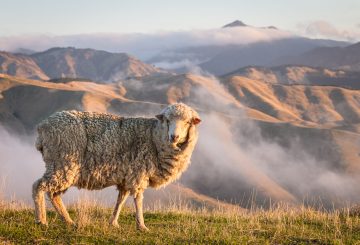New Zealand đang quyên góp gần 19 triệu đô la để hỗ trợ người dân ở các vùng đất ngập nước châu Á đối mặt với những thách thức của biến đổi khí hậu. Sáng kiến này nhằm ngăn chặn những quần thể này cần phải di dời.
Các quỹ được chỉ định cho dự án Mega-Deltas châu Á. Sáng kiến này tập trung vào việc thúc đẩy các hệ thống canh tác chống lại biến đổi khí hậu ở các khu vực như sông Mekong ở Campuchia và Việt Nam, Irrawaddy ở Myanmar và sông Ganges-Brahmaputra-Meghna ở Bangladesh và Ấn Độ.
Nanaia Mahuta, Bộ trưởng Ngoại giao New Zealand, tuyên bố tầm quan trọng của các nỗ lực hợp tác sáng tạo để chống lại tác động của biến đổi khí hậu và giảm khí thải trong khu vực.
Khoản đóng góp này là một phần của quỹ tài chính khí hậu năm 2021 của New Zealand, vốn đã dành ra 1,3 tỷ đô la. Quỹ ưu tiên hành động khí hậu ở Nam và Đông Nam Á. Mahuta giải thích rằng các quỹ sẽ hỗ trợ cả ở cấp trang trại cá nhân, đưa ra lời khuyên và ở cấp hệ thống rộng hơn, cấp quyền tiếp cận tài chính.
Các vùng đất ngập nước ở châu Á là nơi sinh sống của hơn 170 triệu người, những người mà Mahuta mô tả là đặc biệt dễ bị ảnh hưởng bởi hậu quả của biến đổi khí hậu. Các vấn đề như thiếu nước, lốc xoáy dữ dội và mực nước biển dâng mạnh đang đe dọa an ninh của những cư dân này.
Đầu tuần này, New Zealand cũng cam kết 15,6 triệu đô la cho chương trình Năng lượng Địa nhiệt của Indonesia, hỗ trợ nước này đạt được các mục tiêu năng lượng tái tạo.
Trong thời gian tham dự hội nghị ASEAN ở Jakarta, Mahuta đã nói về tác động rõ ràng của biến đổi khí hậu mà cô đã quan sát thấy ở New Zealand và các khu vực lân cận. Bà nhấn mạnh sự cấp bách của việc tăng cường hỗ trợ và nỗ lực hợp tác để chống lại mối đe dọa toàn cầu của biến đổi khí hậu.
Điều đáng chú ý là Trái đất đang trải qua nhiệt độ nóng nhất được ghi nhận. Dữ liệu gần đây nhấn mạnh các đại dương ấm áp bất thường, nhiệt độ Bắc Đại Tây Dương cao và mực nước biển thấp kỷ lục xung quanh Nam Cực.






























































